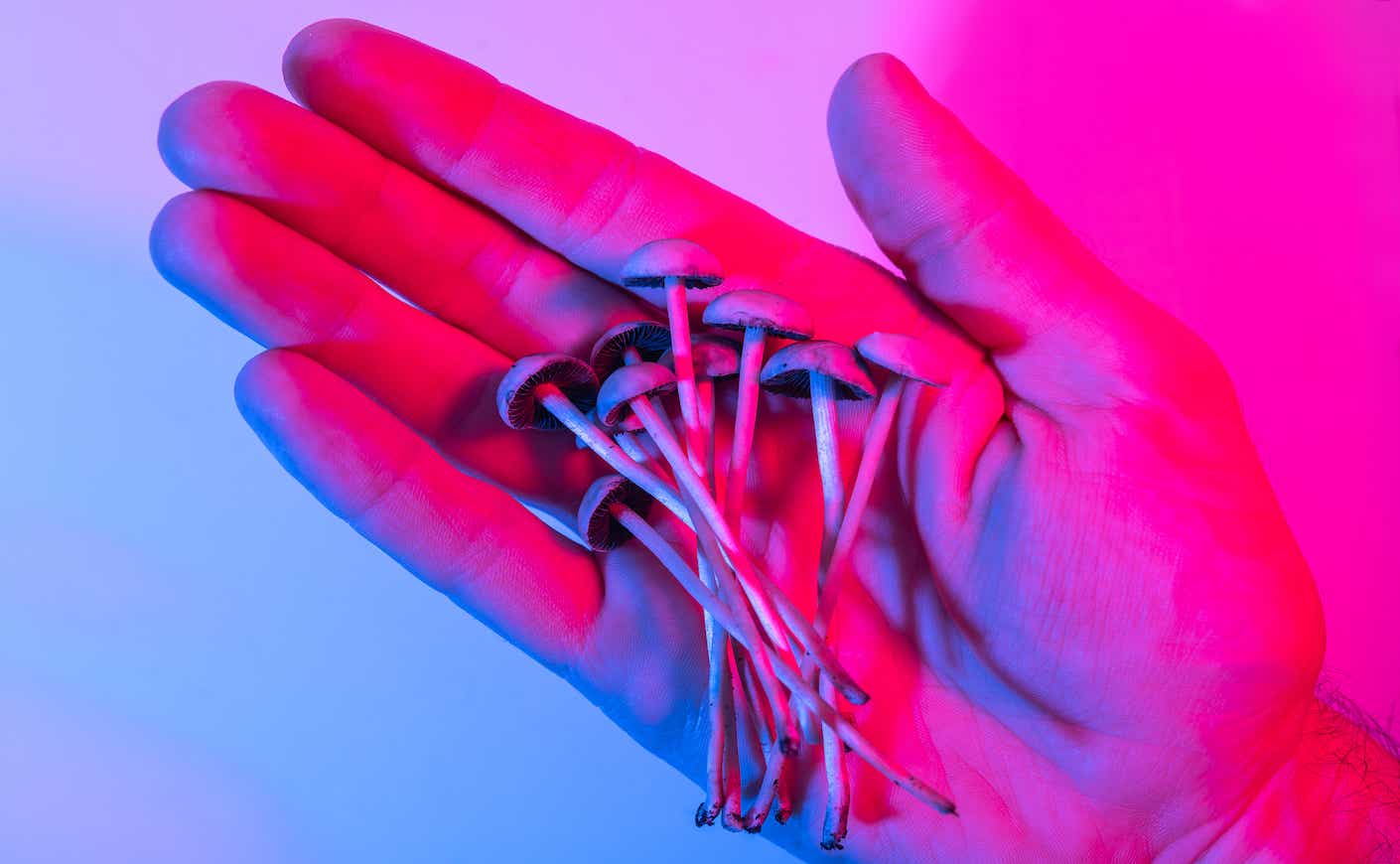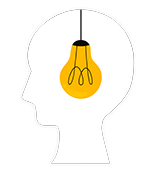Microdosing might sound like a complex scientific experiment, but in reality it’s much simpler than you might think. The word is generally used to describe what happens when a person consumes a tiny portion of psychedelics. And if the thought of psychedelics brings up visions of blacklight posters and 8-hour hallucinations for you, have no fear: What people experience when microdosing is a far cry from a 1960s acid trip — and may have far-reaching positive implications on brain health.
Magic mushrooms are one of the most common substances people use to microdose, but proponents microdose countless substances, including ecstasy and LSD. Mushrooms contain psilocybin, a chemical compound that can offer psychedelic experiences and altered states of consciousness. For a long time, the common understanding of mushrooms and other forms of psilocybin was that they were “serious drugs” that had “serious side effects.” But the increased popularity of microdosing is transforming the cultural conversation around these misunderstood substances.
Microdosing isn’t exactly a mainstream hobby yet, but it’s certainly edging a little bit closer to the center of the zeitgeist every single year. We took at look at what microdosing does to your body, and how its increasing popularity is impacting the laws around psychedelics in general.
How does microdosing work, exactly?
Let’s get one thing straight immediately: Microdosing does not lead to a psychedelic experience. You don’t hallucinate or lose your sense of reality when you microdose — or at least, you shouldn’t. That’s where the term “micro” becomes so crucial to the experience.
According to The New York Times, a microdose is considered five to 10% of a full dose. You can consume it in a number of ways, from a nibble of a chocolate bar to a pre-portioned pill with dried mushrooms inside — but generally speaking, a microdose is about the size of a crumb.
An Austin man experimented with mushroom microdosing, and recounted his experience to the Times. “It just kind of boosted my morale,” he said. “I was in a little bit better mood. I had a little bit more pep to my step. I was having a little bit more fun, feeling a little bit more excited about things.”
Thousands of others have logged their own experiences on the website Erowid, which contains information on illicit substances and firsthand accounts by intrepid experimenters on various substances. One wrote that on tiny amounts of LSD, he “can give my full attention to the person I am talking with, can make easier connections between topics and become very efficient. It becomes incredibly easy to get into a ‘flow’… It isn’t all productivity-related though, I also take better care of myself, taking breaks without feeling guilty for ‘not working’, going out for a short walk etc.”
In other words, microdosing should be considered less a “trip” than an additive element to your daily activities. It doesn’t change the world around you at all — it simply changes your relationship to it, in subtle and sometimes almost imperceptible ways.
Numerous studies have reiterated how consistent (and often transformative) the experience of microdosing tends to be — and this might be why so many people are now microdosing daily, in the same way others might take daily prescriptions. In fact, according to The Cut, many have started microdosing magic mushrooms as an alternative to traditional methods of treating depression, and some have even been able to wean themselves off their anti-depressants by using tiny bits of mushrooms, instead.
Why is microdosing so popular now?
The effects of psilocybin — and psychedelics in general — on the mind and body have been a topic of conversation for decades. So why does it feel like microdosing has become so popular all of a sudden — in spite of the fact that it’s still illegal almost everywhere?
The cultural interest in microdosing, magic mushrooms, and other forms of psilocybin has definitely become more mainstream lately. And while that likely has to do with a number of factors, there are two in particular that are worth notice.
For one, the cultural stigma around marijuana has changed significantly in the last decade. As pot usage is now recreationally legal in plenty of states, and the marijuana industry continues to grow (pardon the pun), it’s natural that the conversation around other natural — and previously stigmatized — substances like magic mushrooms would change, too.
Also, “wellness” and “self-care” have become full-fledged businesses in the last decade, so it makes complete sense that microdosing, with all of its promised positive effects on mental health, would be having a bit of a moment right now. Add in a global pandemic, an economic meltdown, the looming shadow of climate change, the near-insurmountable costs of health care, and other oh-so-trivial matters into the mix, it makes complete sense that so many people are eager for a little pick-me-up.
Given all these factors, it seems likely that the “microdosing trend” isn’t a trend at all, but rather a movement that’ll continue to pick up cultural and legal steam over the next few years. In fact, a number of areas in the country have already become more friendly to the microdose-curious. Cities like Denver and Oakland have already decriminalized psilocybin use, for example, and it seems like many more are poised to do the same in the near future. So it’s conceivable that psilocybin might be on offer, completely legally to boot, in your city before you know it.
The information provided on this site isn’t intended as medical advice, and shouldn’t replace professional medical treatment. Consult your doctor with any serious health concerns.









